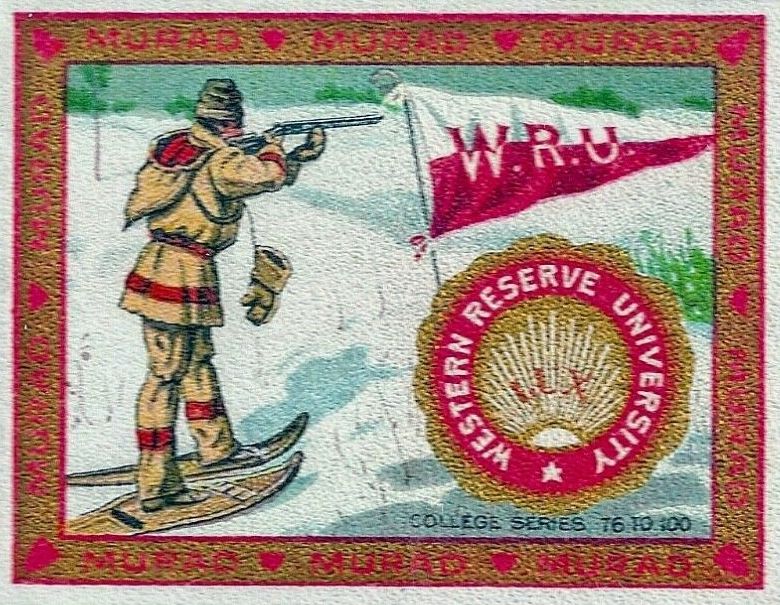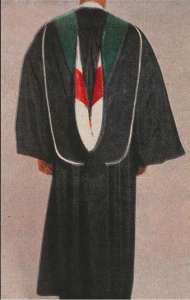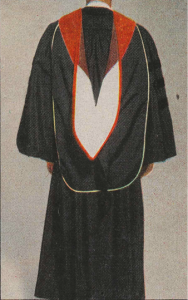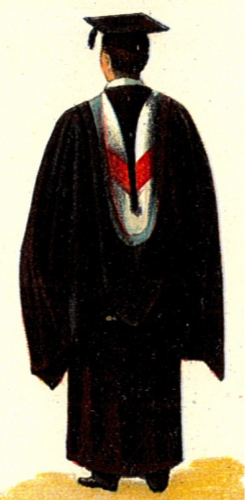Case Western Reserve University
Ohio
1967
Formerly “Case Institute of Technology” and “Western Reserve University”





Traditional colors for Case Institute of Technology: seal brown and white
The faculty and students of Case Institute selected seal brown (dark brown) and white in 1894 because none of the other schools in that region of the US used these colors at the time.
Citations in the World Almanac for Case Institute (listed by cover date; color information is from the previous year): seal brown/white (1904); brown/white (1906); seal brown/white (1908); brown/white (1909-1914); seal brown/white (1915-1918); brown/white (1923-1931); seal brown/white (1934-1935)
Traditional colors for Western Reserve University: crimson and white
The school colors for Western Reserve were originally purple and “Bismarck” (“a shade midway between orange and cinnamon brown” according to the 1884 Encyclopedia Britannica), but the university began using red and white in the late 1800s. Initially the university defined the shade of red as crimson, but by the 1930s the color had been redefined as scarlet.
Citations in the World Almanac for Western Reserve (listed by cover date; color information is from the previous year): crimson/white (1896-1900); red/white (1902-1904); crimson/white (1906-1918); red/white (1923-1931); scarlet red/white (1934-1935)



Traditional colors for Case Western Reserve University: blue and gray
When the two schools merged to form Case Western Reserve University in 1967, blue and gray were selected as the colors for the new institution. The university uses medium to dark shades of each color.

An IBAC list from c.1912 stated that Western Reserve’s hood lining was white with a scarlet chevron, even though the university described the shade of its red school color as crimson during this period.
By 1927 at the latest the IBAC had assigned a dark brown and white hood lining to Case Institute, and to avoid duplicating the hood lining of Lehigh University (dark brown lining with white chevron) the Bureau’s hood lining design for Case placed the dark brown above the white with the two colors divided per chevron.

Adelbert College was the men’s undergraduate college of Western Reserve University in the late 1800s, and in an advertisement in the 1896 Illio yearbook of the University of Illinois it was cited as a client of Cotrell & Leonard, the depository for the Intercollegiate Bureau of Academic Costume (IBAC). Use of academic costume must have been at that point limited to the undergraduate students, but according to the Western Reserve University Reports of the President and Faculties 1896-97, the faculty of Western Reserve University approved the use of academic costume for the entire university in 1897 and hoped to introduce it during the 1897-98 school year.

After the two schools merged in 1967, the IBAC initially assigned Case Western Reserve a hood described as navy blue with a steel gray chevron. But almost immediately the design was revised to an awkward heraldic pattern that featured a blue lining with two gray chevrons of unequal widths. The top chevron was the standard width of three inches, while the lower chevron was 1½ inches in width.
Here Case Western Reserve’s hood lining has been redesigned to combine the per chevron pattern of Case, the chevron of Western Reserve, and the two chevrons of Case Western Reserve in a way that more precisely captures the blending of the heraldic ordinaries of the three institutions, but in a more aesthetically-pleasing manner.
